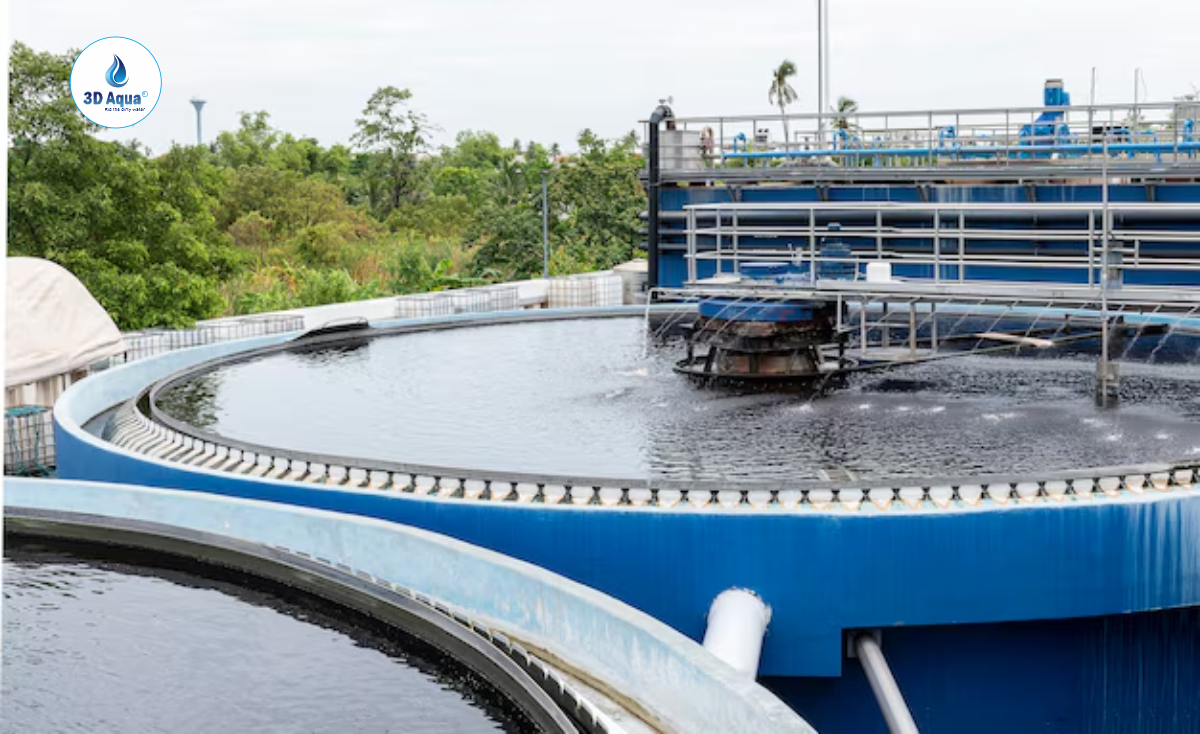In a Sewage Treatment Plant (STP), Mixed Liquor is a combination of wastewater and activated sludge in the aeration tank during the biological treatment of sewage. The purpose of mixed liquor is to facilitate the degradation of organic pollutants by microorganisms. This biological process is crucial for wastewater treatment before its discharge into the environment or reuse.
In this blog, we will explore the importance of mixed liquor in an STP, its composition, and its role in the sewage treatment process.
Composition of Mixed Liquor in an STP
Mixed liquor consists of a suspension of microorganisms (bacteria, protozoa, and other microorganisms) in wastewater. It comprises two key components:
1. Activated Sludge:
Activated sludge consists of microorganisms that break down organic matter in wastewater. This biomass is continuously recycled in the aeration tank to ensure proper aeration and maintain an active biological treatment process.
2. Wastewater:
Raw sewage or partially treated wastewater enters the aeration tank, where it mixes with the activated sludge. This combination forms mixed liquor, which undergoes biological treatment as microorganisms decompose organic pollutants into simpler compounds.
Role of Mixed Liquor in the Sewage Treatment Process
Mixed liquor plays a vital role in effective sewage treatment. The biological processes involved include:
1. Biological Degradation of Organic Matter:
The microorganisms in activated sludge metabolize contaminants such as fats, proteins, and carbohydrates, breaking them down into carbon dioxide, water, and methane. This is a key step in the purification process, ensuring that harmful organic substances are removed from wastewater before discharge.
2. Oxygen Supply for Microorganisms:
The aeration tank is continuously aerated using mechanical aerators or diffusers to provide the oxygen required for microbial metabolism. Oxygen ensures that microorganisms remain active, enhancing the breakdown of organic pollutants. Continuous mixing of mixed liquor helps distribute oxygen and nutrients evenly, optimizing treatment efficiency.
3. Floc Formation for Sedimentation:
Microorganisms in the mixed liquor form flocs, which are clusters of bacteria and organic material bound together. These flocs settle at the bottom of the clarifier tank, separating the treated water from the sludge. This sedimentation process is essential for removing organic matter efficiently.
Importance of Monitoring Mixed Liquor Parameters
Monitoring and controlling mixed liquor parameters in an STP ensures optimal performance. Key parameters include:
1. Mixed Liquor Suspended Solids (MLSS):
MLSS measures the total concentration of suspended solids (including microorganisms) in mixed liquor. Maintaining the right MLSS level is crucial:
- Higher MLSS improves treatment efficiency but may lead to aeration inefficiency and poor sludge settling.
- Lower MLSS reduces biological activity, resulting in ineffective wastewater treatment.
2. Mixed Liquor Volatile Suspended Solids (MLVSS):
MLVSS represents the portion of MLSS composed of active microorganisms. The MLVSS-to-MLSS ratio indicates biological activity:
- A high MLVSS level means a greater proportion of active microbes, enhancing pollutant breakdown.
- A low MLVSS may indicate excess inert solids, reducing treatment efficiency.
3. Dissolved Oxygen (DO) Levels:
Microorganisms need sufficient dissolved oxygen (DO) to metabolize organic contaminants effectively. Key considerations:
- Low DO leads to poor microbial activity, reducing treatment efficiency.
- Excess DO increases energy consumption without additional treatment benefits.
- Maintaining an optimal DO level ensures efficient biological treatment.
How to Maintain and Manage Mixed Liquor in an STP?
Proper management of mixed liquor enhances STP performance. Here are some essential strategies:
1. Adjusting Aeration Levels:
Proper oxygen supply is vital for microbial activity. Operators must adjust aerators or diffusers to maintain optimal DO levels, ensuring effective breakdown of pollutants.
2. Controlling MLSS and MLVSS Levels:
Regular monitoring of MLSS and MLVSS ensures an optimal microbial population for efficient treatment. Adjustments include:
- Wasting excess sludge when MLSS is too high.
- Returning activated sludge to maintain treatment efficiency when MLSS is low.
3. Sludge Wasting and Recycling:
Sludge wasting prevents excessive solids buildup, maintaining an efficient microbial balance. This ensures that only healthy, active microbes remain in the system for effective wastewater treatment.
4. Controlling Hydraulic Retention Time (HRT):
HRT determines the time wastewater remains in the aeration tank. Key considerations:
- Longer HRT improves pollutant breakdown but increases tank size and energy costs.
- Shorter HRT reduces energy costs but may lead to incomplete treatment.
- Operators must balance HRT for optimal efficiency and cost-effectiveness.
Conclusion
Mixed liquor is a critical component of the biological treatment process in a Sewage Treatment Plant (STP). It facilitates the breakdown of organic pollutants, ensuring wastewater is treated efficiently. Proper monitoring and management of parameters like MLSS, MLVSS, and DO levels enhance STP performance and compliance with environmental regulations.
Need Expert Advice on Water & Wastewater Treatment?
At 3D Aqua Water Treatment Company, we provide customized water and wastewater treatment solutions for homes, businesses, and industries. Our experts ensure efficient wastewater management through advanced treatment technologies.
📞 Contact Us: 7011143366
📧 Email: info@3daqua.in
🌍 Visit: www.3daqua.in

